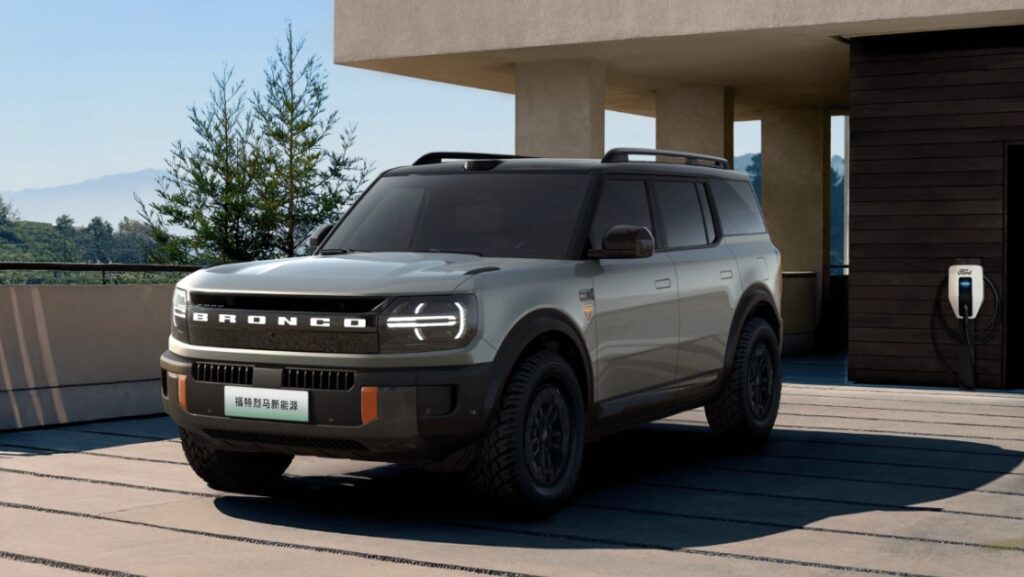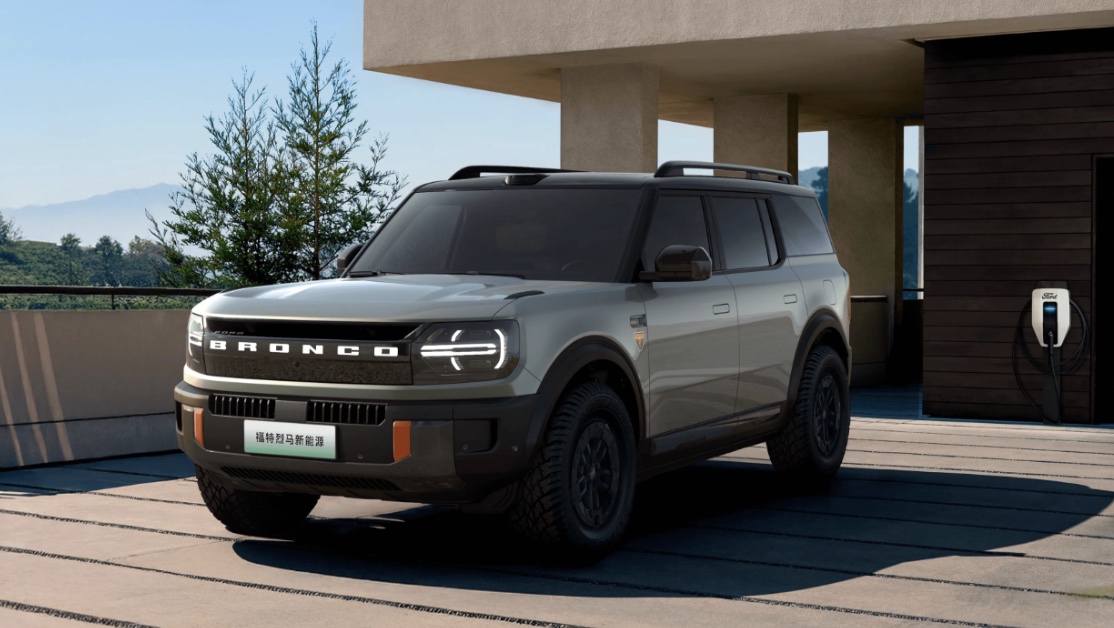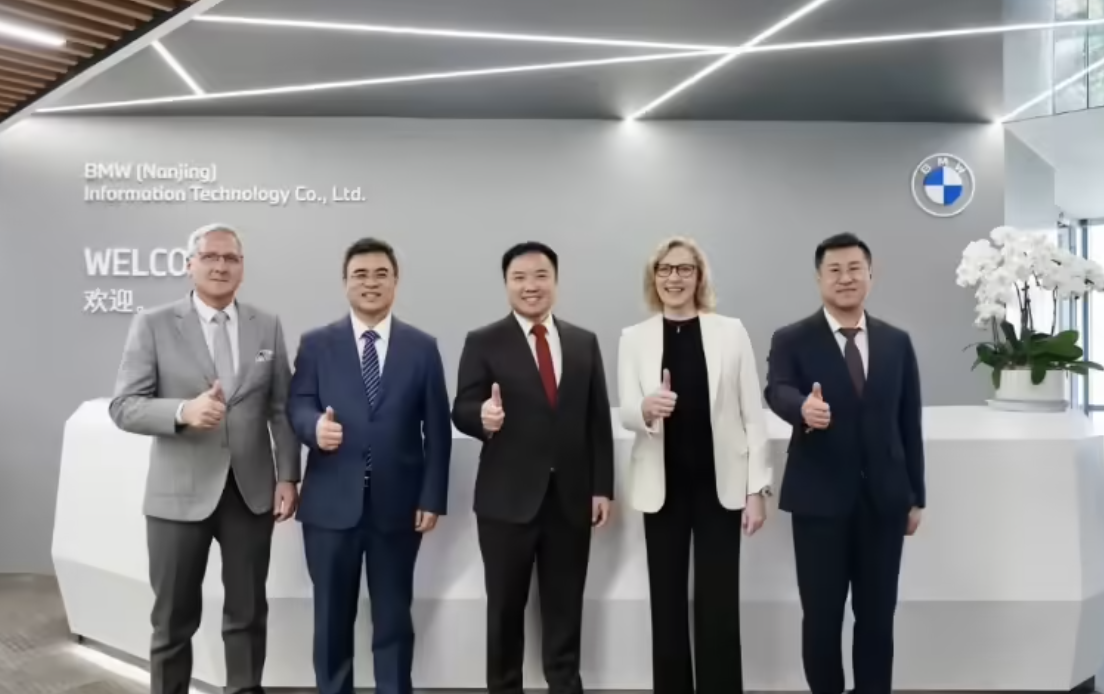In the latest filing with China’s Ministry of Industry and Information Technology (MIIT), images of the Ford Bronco New Energy, developed under JMC-Ford, have been revealed. The model will be offered in both all-electric and range-extended hybrid versions. Ford has already released official images, confirming that the new Bronco will launch in Q4 2025.
Ford Bronco New Energy
Visually, both the BEV and range-extended versions share nearly identical styling, distinct from the gasoline Bronco. The design bears resemblance to the Jetour Shanhai lineup, featuring a wide flat hood, illuminated “BRONCO” branding across the blacked-out grille, newly designed headlamps, and rugged bumpers with body-colored accents. The vehicle is equipped with a roof-mounted LiDAR and 30+ sensors/cameras, enabling advanced driver-assistance features, which Ford claims are at the industry’s leading level.

The pure EV measures 5025/1960/1815 mm (1825 mm height optional), while the range-extended version is 5025/1960/1825 mm (1815–1840 mm height), both with a 2950 mm wheelbase. At the rear, it features vertical taillamps, a side-opening tailgate, and an externally mounted spare wheel.
Inside, the SUV is expected to retain much of the gasoline Bronco’s design, including dual 12-inch digital displays, physical buttons for multimedia and HVAC controls, and waterproof switches.
Power comes from dual electric motors (130 kW front / 202 kW rear) in the BEV version, paired with a 105.4 kWh battery delivering 650 km CLTC range. The range-extended model uses a 1.5T engine (110 kW) as a generator, combined with dual motors (130 kW / 180 kW), and a 43.7 kWh battery providing 220 km pure-electric range and 1,220 km combined range.
Buick Zijing L7
In parallel, Buick unveiled the Zijing L7, the first sedan under its new Zijing Electra high-end NEV brand. Built on SAIC-GM’s Xiaoyao architecture, it adopts a range-extended hybrid system and integrates technologies from local partners such as Momenta. The car will offer L2++ advanced driver-assistance and an intelligent cockpit.
The Zijing L7 features slim LED headlamps, a closed grille, and sporty hood contours. A roof-mounted LiDAR hints at strong autonomous-driving capabilities. The side profile includes hidden door handles and black/chrome trim along the window line, while the rear adopts a full-width taillight cluster with a ducktail spoiler. Measuring 5032/1952/1500 mm with a 3000 mm wheelbase, the L7 is positioned as a mid-to-large sedan. Power comes from a 1.5T engine (115 kW) as a generator, paired with a lithium iron phosphate (LFP) battery pack.
Industry Context
The surge in range-extended hybrids reflects an accelerating trend across China’s auto industry. Market players now include Li Auto, Seres (AITO), Deepal, Voyah, Leapmotor, BAIC, and more. Notably, Seres has partnered with Huawei to develop the AITO M5, M7, M8, and M9, directly rivaling Li Auto. Even Volkswagen, once critical of the technology, is preparing to launch range-extended models next year, joined by Audi (SAIC-Audi) and BMW, which is rumored to be reviving its REEV program. On July 18, Chery will launch the Fengyun X3L, a compact range-extended SUV.
From a technical perspective, range-extender hybrids are easier and quicker to develop than BEVs, since they build on traditional ICE platforms with added batteries and motors. Lower battery requirements reduce costs, making them attractive to legacy automakers seeking fast market entry. At the same time, most OEMs are pursuing a “dual-track” strategy, offering both hybrids and pure EVs. While BEVs represent the long-term direction, current demand remains stronger for hybrids, giving traditional automakers a valuable opportunity to regain market share.



